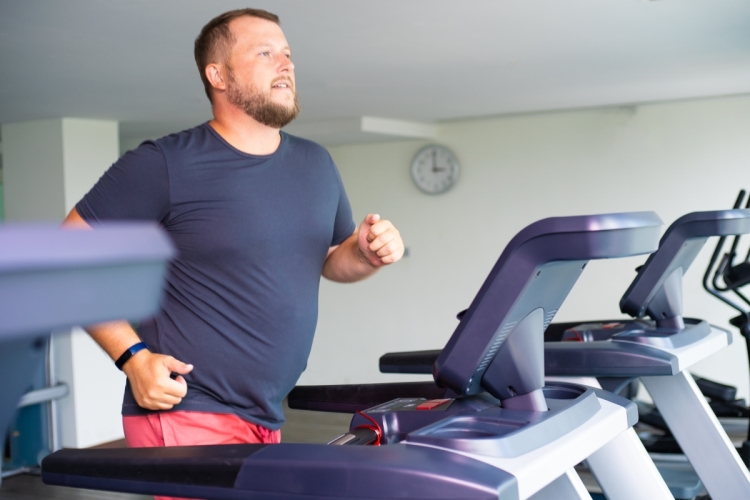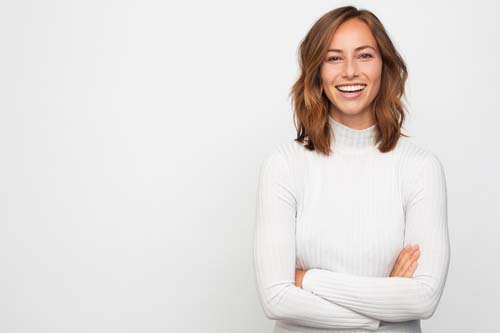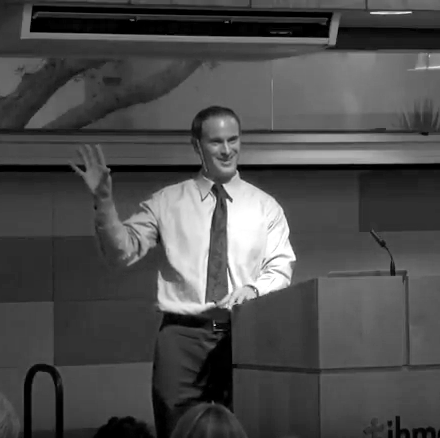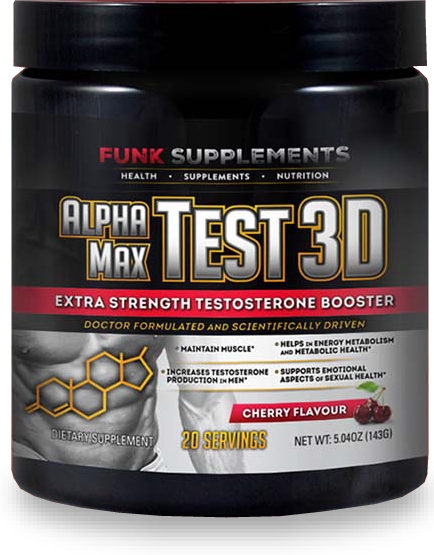Intermittent Fasting for Bulking: Can You Add Muscle While Fasting?
Updated by Stephen Anton PhD on November, 2nd 2022

Can you bulk up while practicing intermittent fasting?
That is an interesting question, and one that many body builders and fitness enthusiasts have been asking as the popularity of intermittent fasting continues to increase.
The good news is the answer is 100% YES. That is, if the right stimulus is given to the body at the right times of the day.
Before discussing the intermittent fasting bulk plan, let’s first review what is typically recommended to someone who desires to “bulk up.”
Problems with Current Bulking Strategies
Up until recently, it was thought that the only way to “bulk up” is to eat frequent, large meals over the course of the day, while also pushing heavy weights around at the gym a few times a week. If your goal is to gain weight (both fat and muscle) as rapidly as possible, this approach does indeed work.
If on the other hand, your goal is to gain muscle without the added fat that typically accompanies the “bulking” phase, then it’s good to be aware of a couple downsides to this approach.
Intermittent Fasting Bulking Plan
In contrast to the traditional bulking approach, with the slow and steady IF bulk plan you can add muscle without gaining too much (or any) additional body fat. With this approach, the body is able to slowly gain muscle in a way that it can be retained, while keeping body fat levels low the whole time.
The result is that you can craft the body you want, while looking and feeling good, throughout the whole process. If this is your goal, then the IF bulk approach is for you!
Intermittent Fasting Bulking Benefits
From a health and muscle gain standpoint, there are a number of reasons to combine intermittent fasting, specifically time restricted eating, with a muscle building diet and exercise program:
Intermittent Fasting Bulking Research
Recent trials suggest that at a minimum intermittent fasting does not lead to muscle loss when combined with weight lifting.
How to Bulk While Intermittent Fasting
As great as these findings are, I believe you can do even better and pack on high quality muscle by focusing on consuming calories during the natural anabolic windows that occur when you practice both intermittent fasting and strength training.
Intermittent Fasting Bulking Supplements
What ultimately influences whether or not one gains size and strength from a weight training session? This is a key question to consider if your goal is to bulk up!
There are two key factors that influence whether or not you are likely to gain size and strength from a workout.
The first factor is the anabolic stimulus provided by your training session. Generally, the greater the intensity, the greater the effects (up to a point).
The second is the anabolic response to the workout (aka recovery). This is clearly influenced by the intensity level of the workout but is also influenced by the body’s anabolic stat pre and post-workout.
There are a number of good pre-workout supplements out there to help energize you for a workout, but what most supplements lack are specific compounds designed to maximize the anabolic response to your weight training session.
Intermittent Fasting for Bulking Summary
Overall, fasting and bulking can be combined successfully. In fact, compared to standard bulking approaches, intermittent fasting and bulking is healthier, more effective, and produces less body fat.
With intermittent fasting and bulking, you will also experience healthier cells, improved muscle maintenance, higher quality muscle growth, and increased human growth hormone.
In order to maximize your results, remember to focus calorie consumption during your natural anabolic windows.
For most people, that means in the beginning of the day when you first break your fast, and right after your evening workout.
More on intermittent fasting:
Intermittent Fasting Immune System: The Boosting Effects of Fasting
Intermittent Fasting for Bulking: Can You Add Muscle While Fasting?
Updated by Stephen Anton PhD on November, 2nd 2022

Can you bulk up while practicing intermittent fasting?
That is an interesting question, and one that many body builders and fitness enthusiasts have been asking as the popularity of intermittent fasting continues to increase.
The good news is the answer is 100% YES.
That is, if the right stimulus is given to the body at the right times of the day.
Before discussing the intermittent fasting bulk plan, let’s first review what is typically recommended to someone who desires to “bulk up.”
Problems with Current Bulking Strategies
Up until recently, it was thought that the only way to “bulk up” is to eat frequent, large meals over the course of the day, while also pushing heavy weights around at the gym a few times a week.
If your goal is to gain weight (both fat and muscle) as rapidly as possible, this approach does indeed work.
If on the other hand, your goal is to gain muscle without the added fat that typically accompanies the “bulking” phase, then it’s good to be aware of a couple downsides to this approach.
Intermittent Fasting Bulking Plan
In contrast to the traditional bulking approach, with the slow and steady IF bulk plan you can add muscle without gaining too much (or any) additional body fat.
With this approach, the body is able to slowly gain muscle in a way that it can be retained, while keeping body fat levels low the whole time.
The result is that you can craft the body you want, while looking and feeling good, throughout the whole process.
If this is your goal, then the IF bulk approach is for you!
Intermittent Fasting Bulking Benefits
From a health and muscle gain standpoint, there are a number of reasons to combine intermittent fasting, specifically time restricted eating, with a muscle building diet and exercise program:
Intermittent Fasting Bulking Research
Recent trials suggest that at a minimum intermittent fasting does not lead to muscle loss when combined with weight lifting.
How to Bulk While Intermittent Fasting
As great as these findings are, I believe you can do even better and pack on high quality muscle by focusing on consuming calories during the natural anabolic windows that occur when you practice both intermittent fasting and strength training.
Intermittent Fasting Bulking Supplements
What ultimately influences whether or not one gains size and strength from a weight training session?
This is a key question to consider if your goal is to bulk up!
There are two key factors that influence whether or not you are likely to gain size and strength from a workout.
The first factor is the anabolic stimulus provided by your training session.
Generally, the greater the intensity, the greater the effects (up to a point).
The second is the anabolic response to the workout (aka recovery).
This is clearly influenced by the intensity level of the workout but is also influenced by the body’s anabolic stat pre and post-workout.
There are a number of good pre-workout supplements out there to help energize you for a workout, but what most supplements lack are specific compounds designed to maximize the anabolic response to your weight training session.
Intermittent Fasting for Bulking Summary
Overall, fasting and bulking can be combined successfully.
In fact, compared to standard bulking approaches, intermittent fasting and bulking is healthier, more effective, and produces less body fat.
With intermittent fasting and bulking, you will also experience healthier cells, improved muscle maintenance, higher quality muscle growth, and increased human growth hormone.
In order to maximize your results, remember to focus calorie consumption during your natural anabolic windows.
For most people, that means in the beginning of the day when you first break your fast, and right after your evening workout.
More on intermittent fasting:
Intermittent Fasting Immune System: The Boosting Effects of Fasting

Get the Beginner’s Guide to Intermittent Fasting
Take advantage of this FREE PDF and learn the basics of intermittent fasting.

Get the Beginner’s Guide to Intermittent Fasting
Take advantage of this 100% free PDF and learn the basics of intermittent fasting.

Get the Beginner’s Guide to Intermittent Fasting
Take advantage of this FREE PDF and learn the basics of intermittent fasting.










